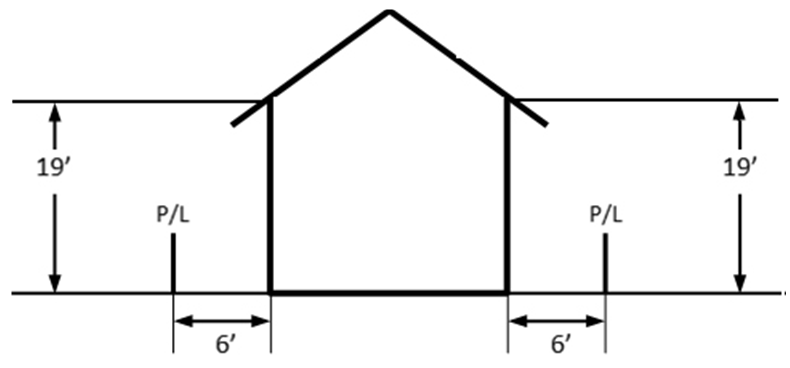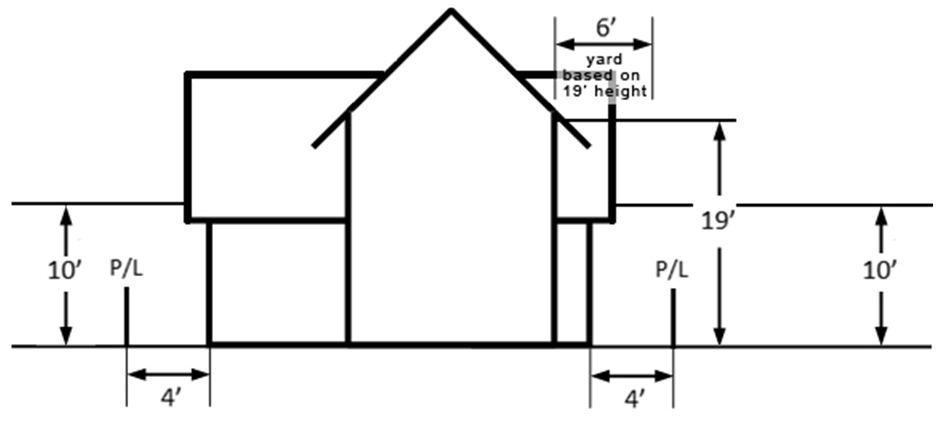10.705 Building Height and Side-Yard Determination.
(1) Calculation. Building height shall be determined by measuring the vertical distance from the average contact ground level at the front wall of the building to the highest top plate. For properties that slope downward from the street, the building height shall be measured from both the front and rear elevations as per the following:
(a) The measurement of the front wall shall be calculated as listed above in subsection (1). The measurement of the back wall shall be calculated measuring the vertical distance from the lowest contact ground level at the back wall of the building to the highest top plate. If the back elevation is higher than the front wall elevation, the rear elevation shall be used for purposes of side and rear yard setbacks.
(2) Exemptions – Building height limitations shall not apply to:
(a) Chimneys, church spires, belfries, cupolas, flag poles, antennas, support structures and antennas for amateur radio operations (as per ORS 221.295), and other similar projections that are accessory to the permitted use.
(b) Wireless communication transmission towers, which are subject to the Special Use Standards contained in Section 10.824.
(c) Public utility service facilities, which are subject to the Special Use Standards contained in Section 10.830.
(d) Parapets may be erected up to five feet above the height limit specified in the underlying zoning district.
How to Measure Building Height

(3) Determining Side-Yards for Detached Single-Family, Duplex Dwellings, and Townhomes.
(a) Side-yards are calculated using the building height measured at the adjacent contact ground level at the outside edges of the front wall of the building. The side-yard is measured from property line to the nearest vertical structural element (i.e. wall or post) of any area under roof cover. For properties that slope downward from the street, the measurement for determining side yard setbacks is listed in Section 10.705(1)(a).
(b) The side-yard is based on the following building heights:
Building Height Range: | Required Yard: |
|---|---|
0 – 18.49 feet | 4 feet |
18.50– 22.49 feet | 6 feet |
22.50 – 26.49 feet | 8 feet |
26.50 – 30.49 feet | 10 feet |
30.50+ feet | 12 feet |
Note: Height is rounded to the nearest whole number (up for numbers 0.5 and greater, and down for numbers less than 0.5)
Note: Minimum required yards allow for a maximum one-foot eave overhang. Required yards for buildings with an eave overhang greater than one foot shall be increased in direct correlation. (See Section 10.707).
Side Yard Setback Examples




For properties that slope down from the street, see Section 10.705 for the building height measurement calculation